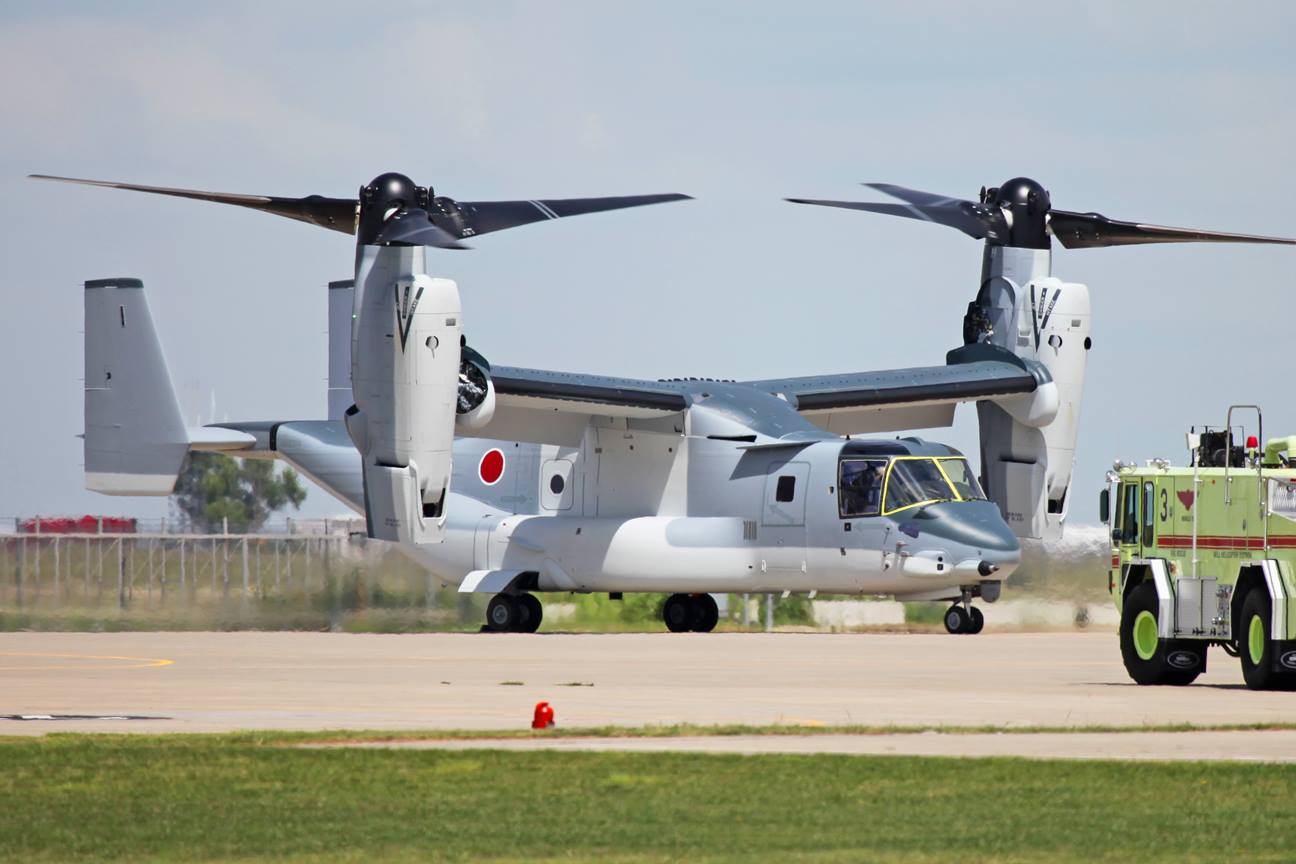In potential Osprey fix, Marine Corps finds it may have misplaced blame in 2015 crash
By:
In December 2015, an MV-22B Osprey that was attempting to land on the amphibious transport dock ship New Orleans lost lift in the final moments of flight, resulting in the aircraft hanging off the edge of the ship and a Class A mishap.
Fortunately all crew survived.
The subsequent
found that the pilot had been negligent in underestimating the weight on board, and “derelict in the performance of his duties," and the co-pilot at fault for his decisions in the last moments of flight.
In August 2017 a very
took place. An MV-22B attempting to land on amphibious transport dock ship Green Bay also lost lift in the final moments of the approach. It collided with the ship instead. The Osprey fell into the ocean,
of the 26 crew aboard.
In the weeks after the 2017 incident, the Marine Corps took a hard look at whether it truly understood all the physics in play. Had the safety margins required for Osprey shipboard operations been underestimated?
Osprey pilots have to plan to maintain a torque margin — an excess amount of power ― in order to safely decelerate, descend and hover when executing a shipboard landing. In the past, there’s been an assumption that those margins had more give
Now however, when Ospreys are flown near their weight limits, and especially on landings involving smaller amphibs like the LPDs, a new conclusion is evolving ― one that may change how any type of tiltrotor approaches a low-deck landing.
“Knowing what we know now, it would be unfair to paint that [the 2015] mishap in the same light,” said Maj. Clark Purcell, the requirements officer for the MV-22 program.
In the immediate aftermath of the 2017 accident, the Marines “made a very aggressive cut to what we would take for gross weights and torque margins to the ship,” Purcell said. Then they started running computer simulations.
During an LPD landing, Ospreys usually approach from the ship’s stern, from an angle, to avoid the ship’s tower and structure. But that created a situation with the LPDs where in the last moments of lift, the Osprey could have one nacelle over the water and one over the deck.
An LPD’s flight deck is only about 40 feet off the water. Based on analysis following the 2017 crash, it appears that proximity can impact the Osprey’s performance. It can generate rotor wash from the water, which travels up the side of the ship, recirculating into the rotor.
If it was a normal operation within Osprey’s weight limits, and it was not being pushed beyond its torque limits, there should be no issue. But that’s not always the real-world scenario.
In a potentially problematic landing,
“my left rotor is over the deck, my right rotor is off the deck, I’m getting re-circulation coming from off the water, off the side of the ship, down onto one rotor, basically taking lift off of that rotor, meanwhile this one’s [the other rotor, over the flight deck] almost in ground effect and you get a dissymmetry of lift,” said Michael Gogolin, the Marines Corps’ MV-22 requirements coordinator.
So far the new approaches have only been run through computer simulations due to lack of Navy ship availability to test them. The Marines hope to be able to test out the new landings later this year. Until there’s real-world trial and error, they won’t know for sure.
“One of the things that we have to look at as we look at possible alternative approaches is how bad is that effect of one rotor over the deck," Purcell said. “How do we mitigate that coming from the side? Do you come in from the stern? Do you come in higher so that you’re out of that re-circulation? All of those things have to be looked at.”






